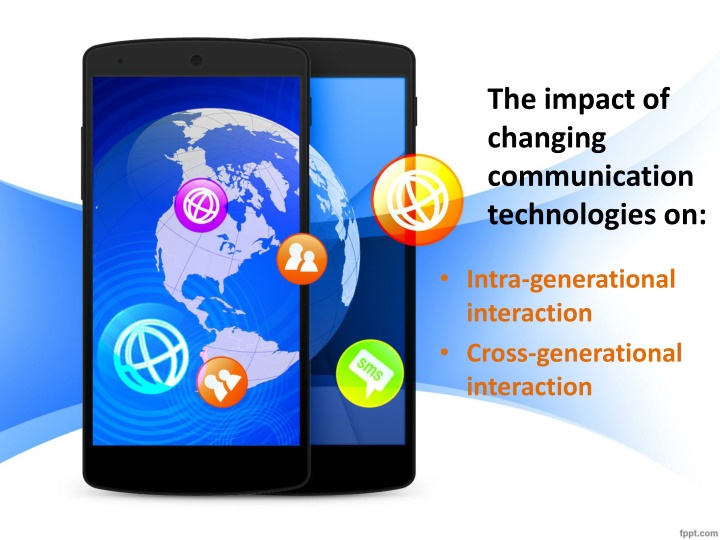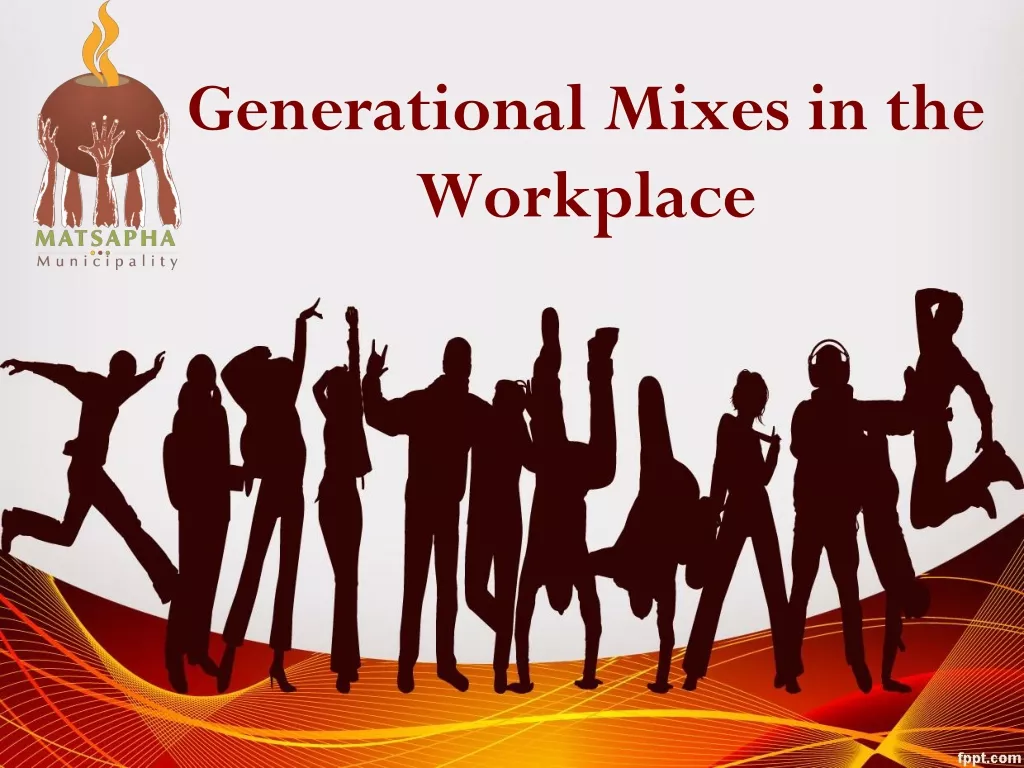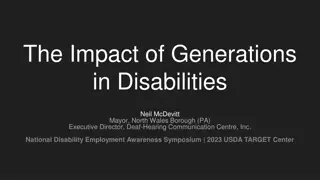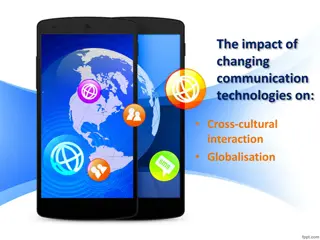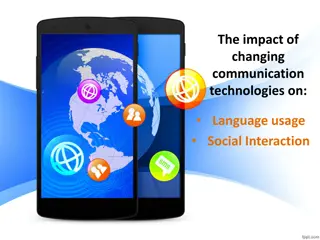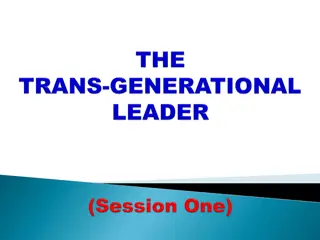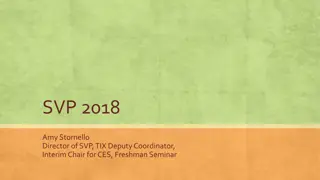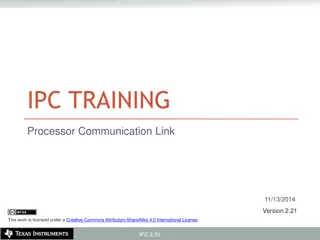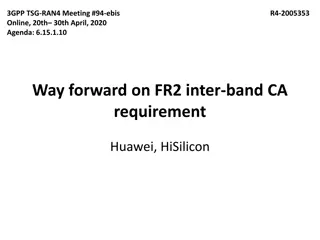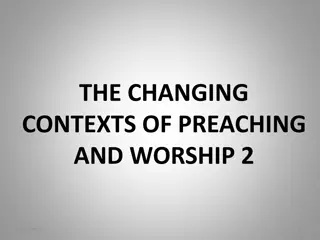The Impact of Changing Communication Technologies on Inter-generational Interaction
The evolution of communication technologies has influenced intra-generational and cross-generational interactions. With increased use of mobile devices, younger generations tend to multitask and may not always focus on face-to-face conversations, impacting non-verbal cues. Social norms have shifted with technology advancements, leading to differences in how different generations perceive and use communication tools, affecting their interactions with one another.
Download Presentation

Please find below an Image/Link to download the presentation.
The content on the website is provided AS IS for your information and personal use only. It may not be sold, licensed, or shared on other websites without obtaining consent from the author.If you encounter any issues during the download, it is possible that the publisher has removed the file from their server.
You are allowed to download the files provided on this website for personal or commercial use, subject to the condition that they are used lawfully. All files are the property of their respective owners.
The content on the website is provided AS IS for your information and personal use only. It may not be sold, licensed, or shared on other websites without obtaining consent from the author.
E N D
Presentation Transcript
The impact of changing communication technologies on: Intra-generational interaction Cross-generational interaction
Images used throughout this PPT have been widely sourced to support material and content used throughout this resource. All resources included are intended for use in an educational setting only and are not to be used for commercial purposes. Click on the notes to use hyperlinks if required.
The impact of changing communication technologies The evolution and changing nature of communication technologies has affected many facets of society and culture Traditionally, native cultures were oral communicators the history of a culture was passed down through the generations. There were no books, and language was not formulated into signs or symbols As time progressed, so did the written language. In current times, some might suggest that everything is written and we are lacking the social ability to pass messages, customs, traditions and cultural practices down orally. The impact of technology has led to changes in social patterns of behavior.
Intra-generational interaction An increased use of communication technologies and a decrease in face- to-face interaction indicate that intra-generational communication is often contextual and the non-verbal language cues may be lost. With a higher use of mobile devices, the younger generation is often multitasking so that the focus is not always specifically directed at the conversation. The body language and gestures do not always indicate a lack of interest, but rather, a growing acceptance of multitasking. The boundaries regarding appropriateness and socially acceptable behaviors may be blurred in informal situations. Social norms have changed with the evolution of mobile devices. People of the Baby Boomer generation may frown upon your mobile device being on the dinner table, but Gen Z would expect to have their device with them at all times.
Activity Read article different generations adapt to the Internet Social Media and complete the questions. the How and
ARTICLE QUESTIONS How Different Generations Adapt to the Internet and Social Media article 1. Which social media platform appears to have the highest percentage of participation among all of the generations? Why do you think this is? The author states While there are plenty of new social networks trying to rise in popularity, it will be hard for any to gain traction with adults . Why do you think she has made this assumption about the Baby Boomer generation? What are some common perceptions among Gen Z regarding the use of different communication technologies? E.g. Facebook vs. Instagram vs. Twitter (etc.) How does the difference in how the generations use communication technologies affect how they interact among other generations? What impact do you think communication technologies will have on Gen Z as they age into their 20s, 30s and 40s? http://wojdylosocialm edia.com/different- generations-adapt- internet-social-media/ 2. 3. 4. 5.
